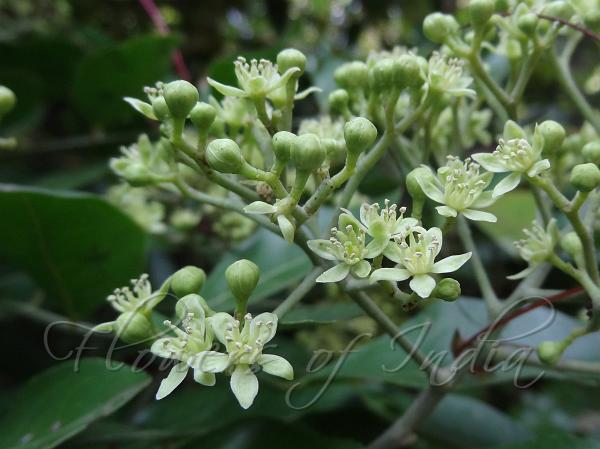|
| Indian Wampi |
|

|

| File size | 547719 |
| Original date | 5/14/14 3:08 PM |
| Resolution | 2048 x 1536 |
| Flash | Flash did not fire, auto |
| Focal length | 4.28mm |
| Exposure time | 1/200s |
| Aperture | 3.3 |
| Focus Distance | |
| Metering Mode | Multi-segment |
| Camera make | SONY |
| Camera model | DSC-HX9V |
| Sensor type |
|
|
|
|
Photo: |
Botanical name: Clausena indica Family: Rutaceae (Lemon family)
Synonyms: Bergera nitida, Piptostylis indica
Synonyms: Bergera nitida, Piptostylis indica
Indian Wampi is a shrub or a small trees with
compound leaves alternate, up to 25 cm long. Leaf-stalk and axis are
slightly zig-zag. Leaflets are 7-13, alternate and opposite, 3.5-7.5 x
2-3.5 cm, elliptic or elliptic-ovate to oblong, oblique at base, blunt
or abruptly tapering at tip, subentire or crenulate and often with
velvet-hairy glands along margins, hairless, gland dots raised on both
surfaces; leaflet-stalks 3-6 mm long. Flowers are borne at branch-ends,
in panicled corymb-like cymes, up to 10 cm long, flower-cluster-stalk
and branches densely puberulous. Flowers are spherical in buds, borne
on 2 mm long flower-stalks; bracts minute, deltate, fringed with hairs.
Sepals are triangular, pointed or rounded, about 0.5 mm long, fringed
with hairs. Petals are oblong, pointed, about 3.5 x 1.2 mm, white,
glandular, hairless. Stamens are 10; filaments subulate above, dilated
below, about 2 mm long; anthers ellipsoid, about 1 mm long. Ovary
nearly spherical, about 1.5 cm long, hairless, style very short, thick,
cylindric, inserted in the depression at top of ovary, caduceus; stigma
capitate, broader than style. Berries are spherical, about 1.5 cm
across, yellowish when ripe; 1-seeded. Indian Wampi is found in
Peninsular India and Sri Lanka. Flowering: February-April.
| Identification credit: Siddarth Machado | Photographed in Sakleshpur, Karnataka. |
• Is this flower misidentified? If yes,